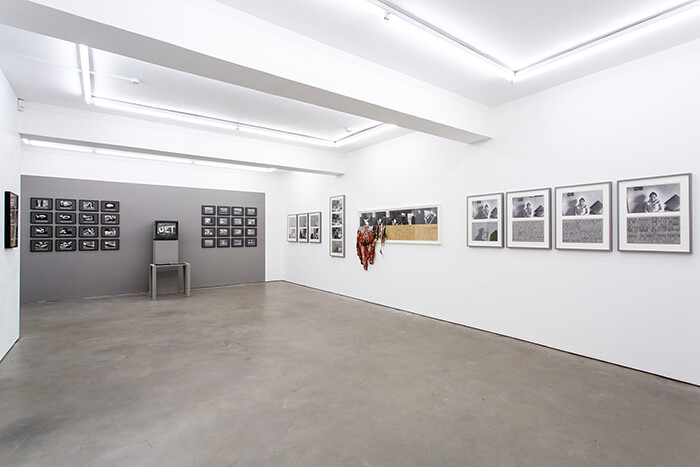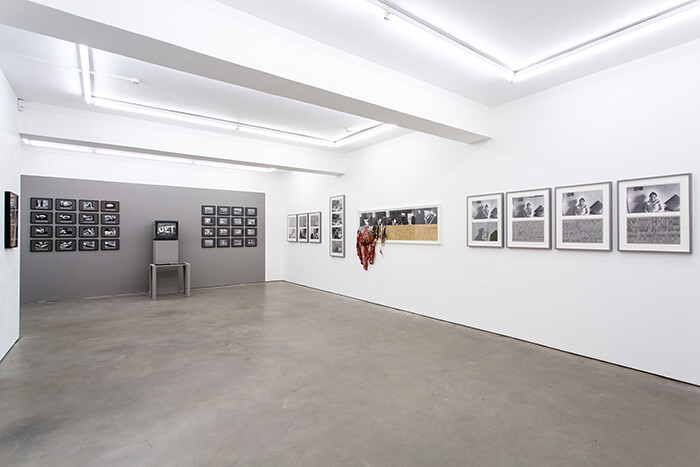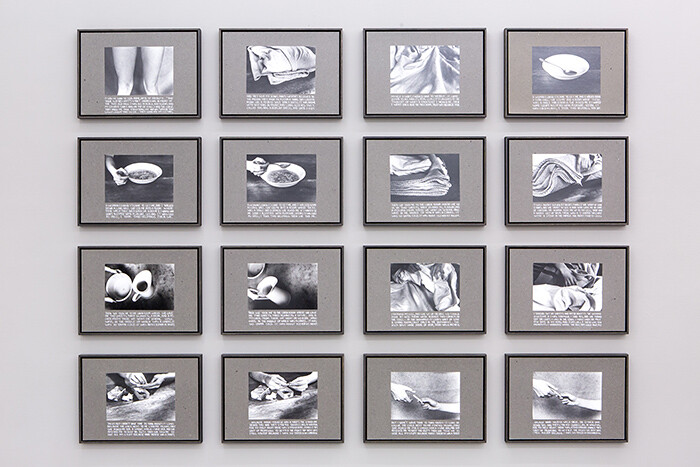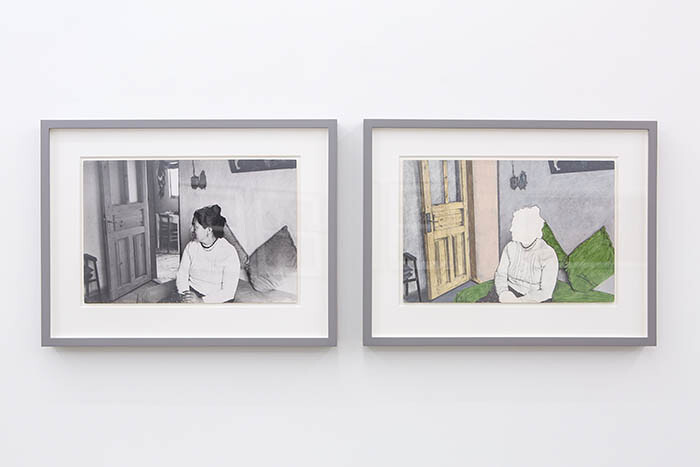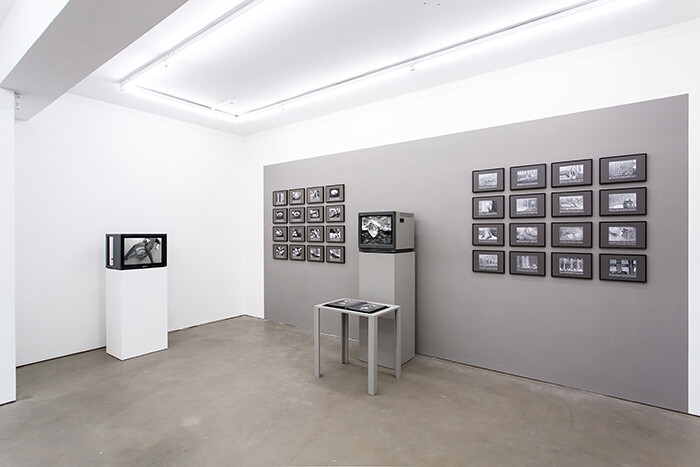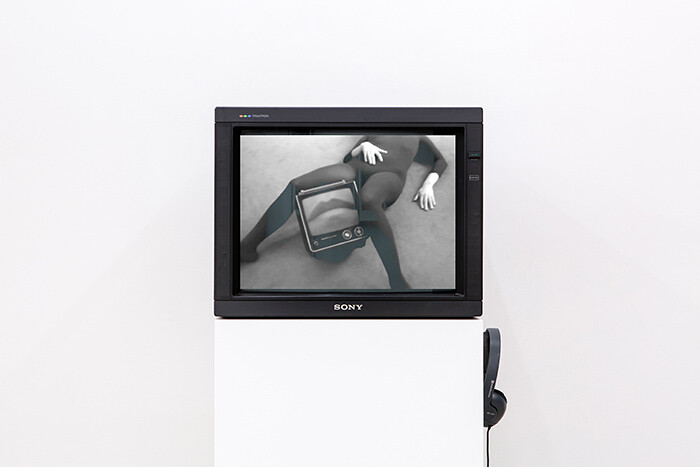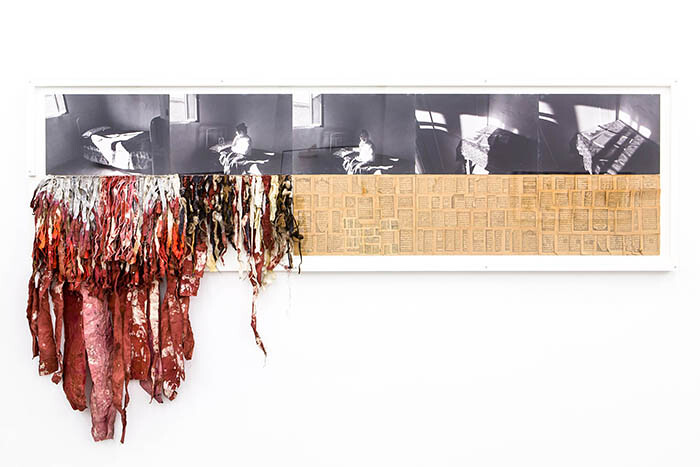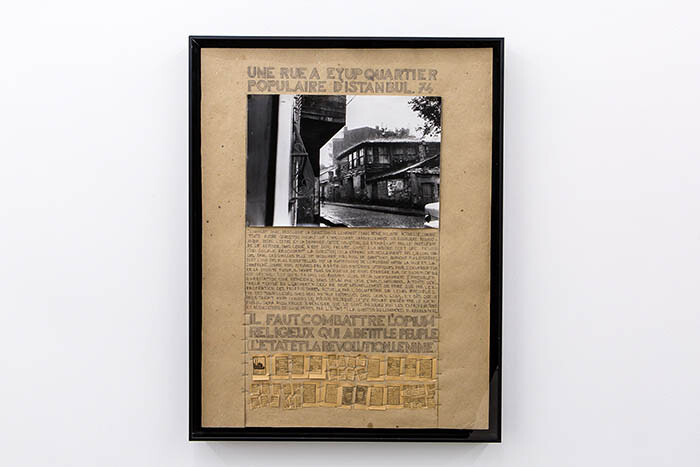The recent resurgence of interest in the pioneering work of Turkish artist Nil Yalter (b. 1938), whose career spans four decades, owes much to Cornelia Butler’s 2007 exhibition “WACK! Art and the Feminist Revolution” at the Museum of Contemporary Art, Los Angeles. In her retrospective of feminist art from the 1970s, Butler showcased La Roquette, Prison des Femmes (1974), Yalter’s early multimedia work, arguably rescuing it from near oblivion. For decades, the video, photographic, and drawing installation, made in collaboration with artists Judy Blum and Nicole Croiset, languished in the collection of the Fonds national d’art contemporain (FNAC) in France, which acquired it early on but never subsequently showed it.
La Roquette, Prison des Femmes is the earliest of four works, all dating from 1974 and 1979, featured in this tightly focused solo show. A docu-fiction, it is based on the account of Mimi, an inmate at the female prison La Roquette in Paris before it was closed and demolished in 1974. The work grew out of another project called Paris Ville Lumière (1974), a critical guided tour of the French capital’s 20 arrondissements seen through the eyes of two foreigners: Yalter and her American collaborator Judy Blum, who initially met Mimi. La Roquette was their focus for the 11th district. The remnants of prison walls, filmed with Nicole Croiset, form the backdrop of Mimi’s poignant narration and reflection of daily life at the prison in a black-and-white video which is presented alongside a transcription of the text, as well as two series of 16 photographic works and photographs of original drawings, which illustrate Mimi’s narrative, mounted on either side of the monitor.
One of the drawings, accompanied by a quotation from Michel Foucault’s Discipline and Punish: The Birth of the Prison (1975) written in white block capitals, features a round, wheel-like structure with a church at its center. Modeled after Jeremy Bentham’s proposal for the all-seeing panopticon, La Roquette was guarded by nuns who kept a close watch on the female inmates but turned a blind eye to the rampant sexuality Mimi repeatedly alludes to. Though not a lesbian, she recalls flirting with and dating fellow prisoners, partly out of sheer boredom. A place of female confinement, sociability, and promiscuity, Yalter’s La Roquette invites comparisons with the “golden prison” of the Ottoman seraglio in the black-and-white video Harem (1979), which draws on historical accounts of life inside the harem.
Harem, a performance made for video, puts the medium to more sophisticated use. Where La Roquette featured shots of moving lips and of hands repeatedly passing over and stroking mundane objects such as blankets, jugs, or coats against the background of the prison wall, Harem uses repetition and screens within screens to disturbing effect, as in the opening sequence in which Yalter rests her hands over the monitor screen, displaying a close-up of a female eye, mirrored in two images of diminishing sizes. In another shot, the artist holds aslant between her legs a monitor showing painted lips bearing teeth in a way that inevitably calls to mind the vagina dentata myth. Fragmented visions of eyes, lips, legs, feet, and breasts appear captive, confined to their monitors, the object of ritual attentions that disconcertingly blur the boundary between reality and representation.
Whether read or written out, texts are an integral part of the four works on display at MOT International. Placed against a paper background, faded with time, the black-and-white photograph of a run-down area of Istanbul in Temporary Dwellings (1974) gives way to handwritten excerpts from Friedrich Engels’s 1892 essay The Housing Question and Vladmir Lenin’s The State and Revolution (1917), with small pages of the Qur’an stapled directly beneath them. More old pages from a Qur’an that belonged to Yalter’s grandmother form neat rows below a horizontal sequence of more black-and-white photographs of a domestic interior that are part of the multimedia installation Rahime, Kurdish Woman from Turkey (1979), the last two of which show books by Lenin and Stalin laid out on a table.
Black, white, and their gradations dominate this spare and elegant exhibition. But color is not altogether absent. Unlike the other two video works on view, the video of Rahime… is shot in color. The installation comprises a series of drawings, a 55-minute video (made in collaboration with Nicole Croiset), photographs, and drawings, which also deploy subtle shades of mauve, yellow, and jade to color in doors, pillows, bed covers, and sundry bits of apparel. In contrast, heads and limbs are left void and fade into the background, equally bereft of color. Most strikingly, a dense cluster of cloth strips, dyed a rusty red, protrudes from the middle of a framed photographic assemblage. Mixed in with tightly wound thread, these “bloody rags” allude to the honor killing of Rahime’s daughter by one of her kinsmen, narrated in the video; but they also summon Yalter’s wider interest in nomadic culture and ritual that threads its way through her work.
